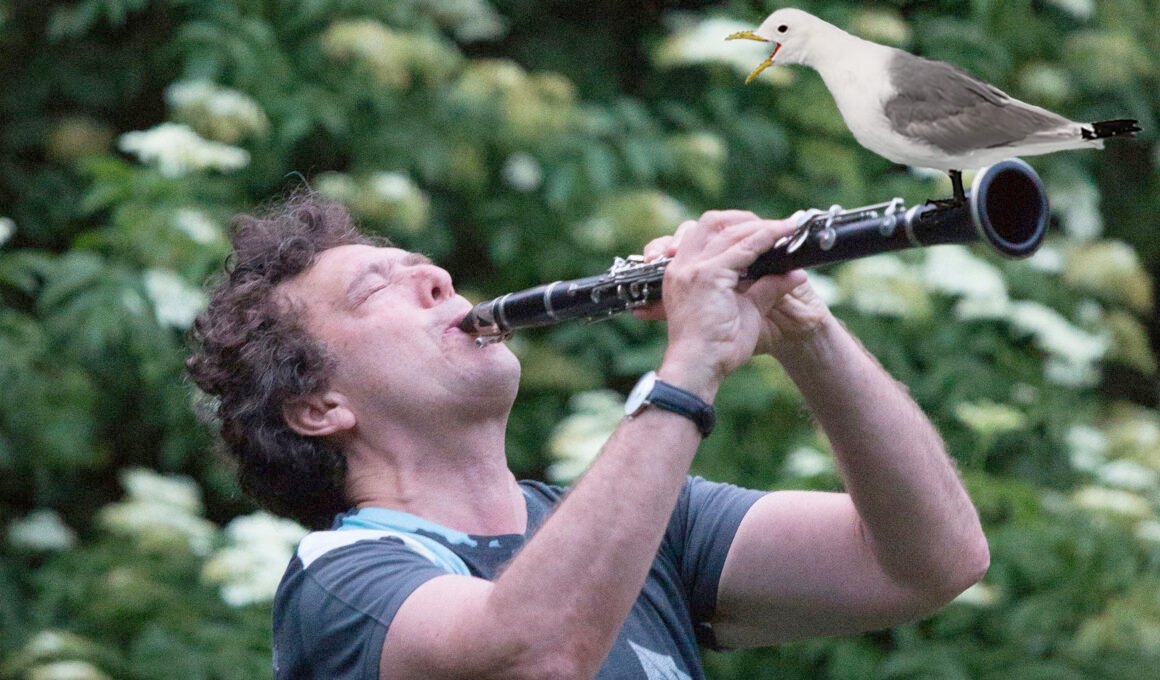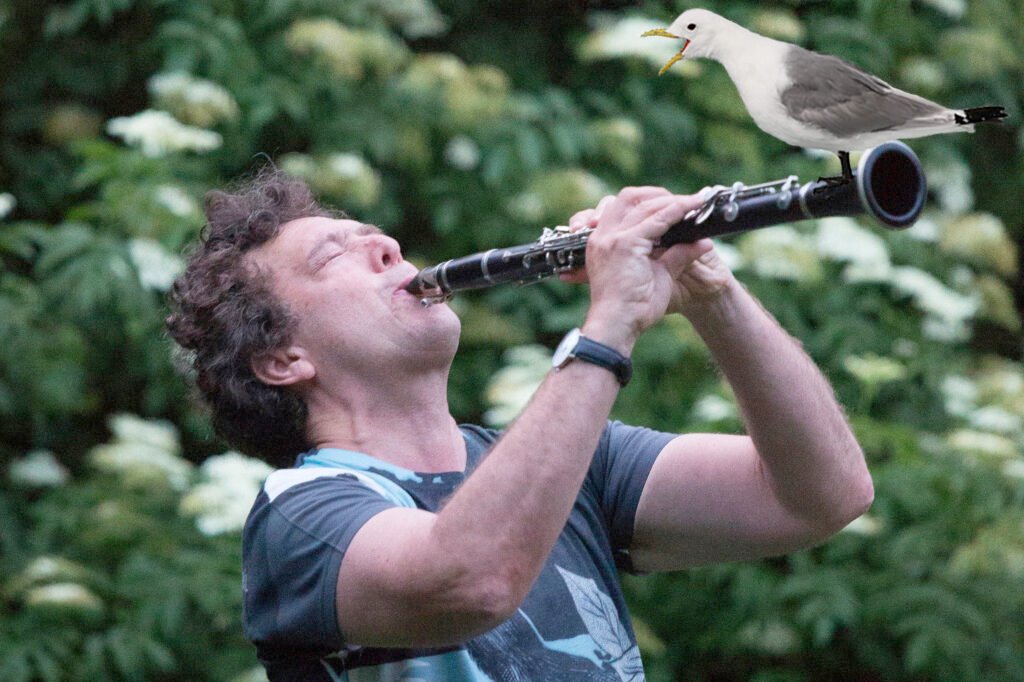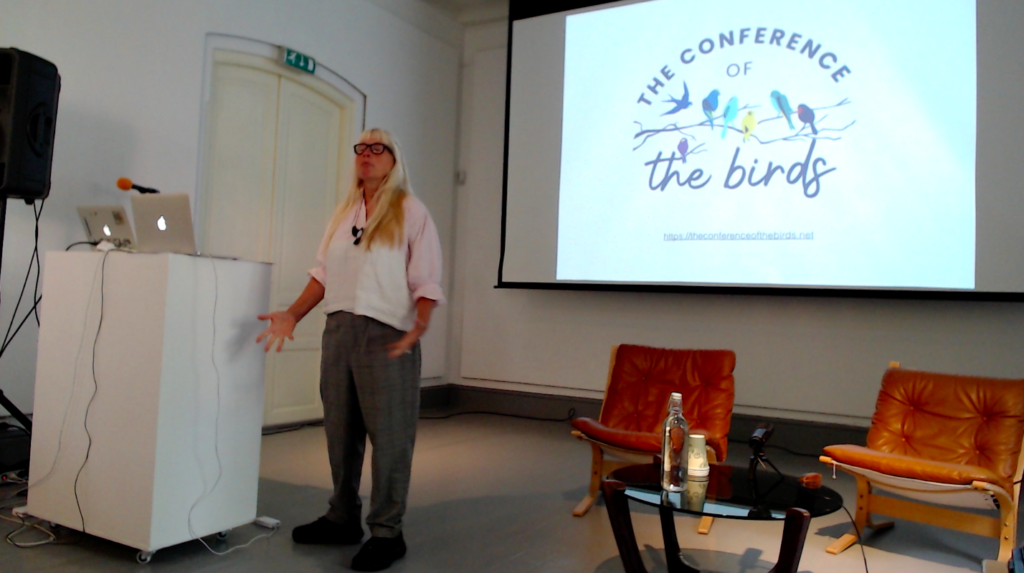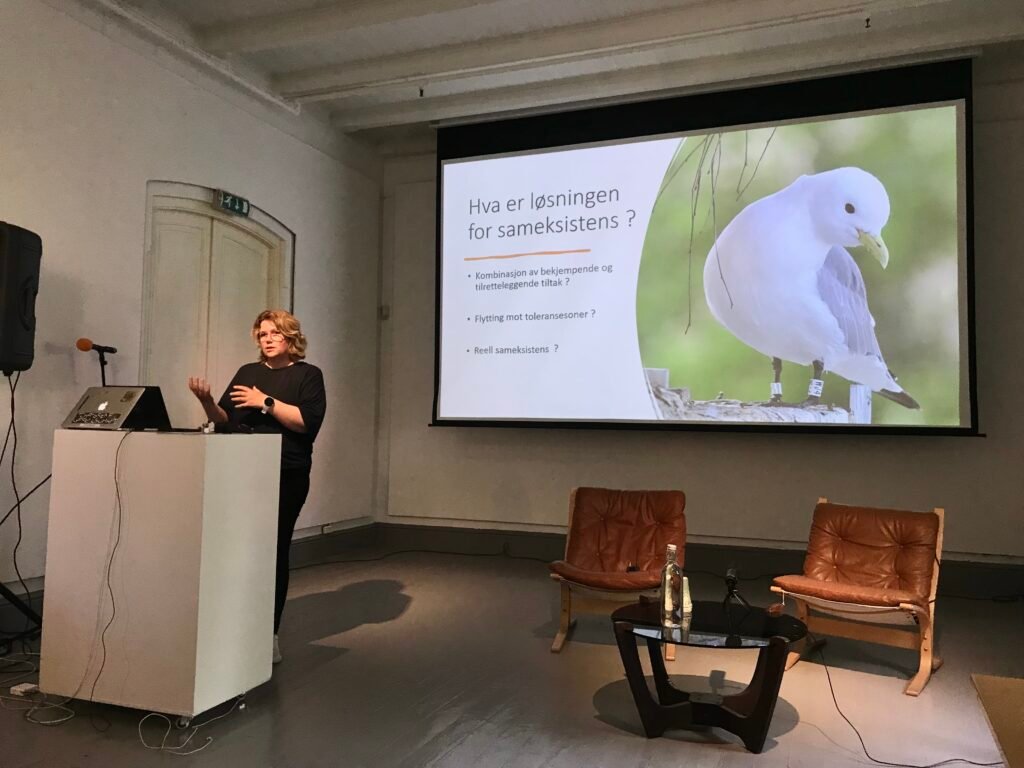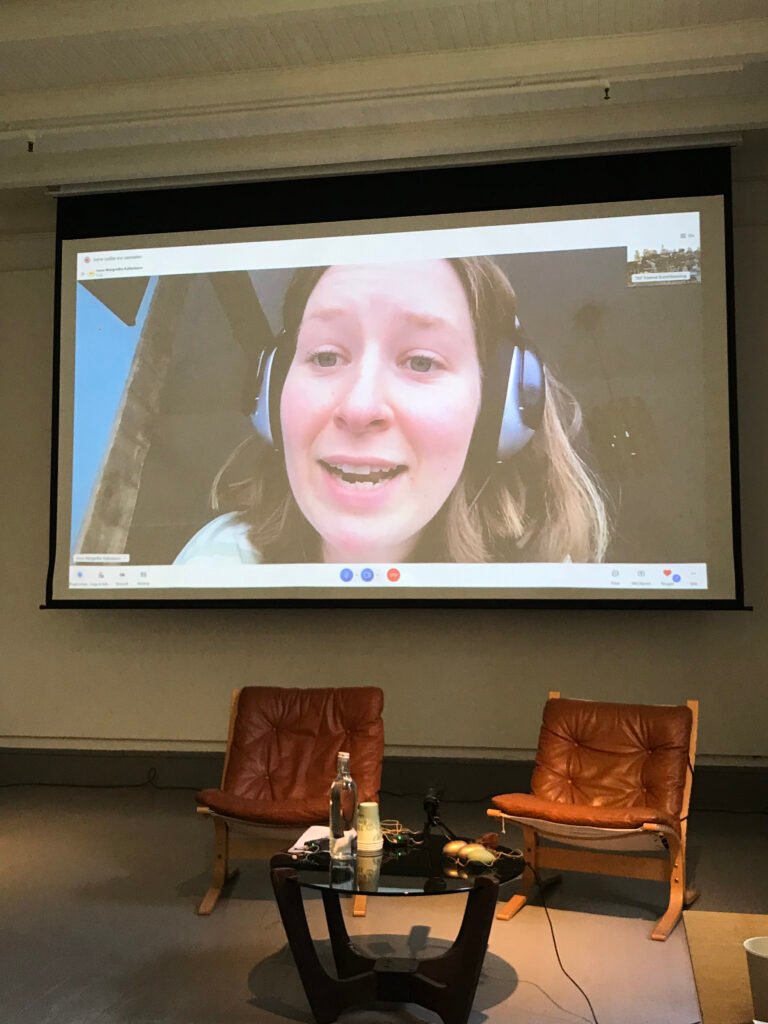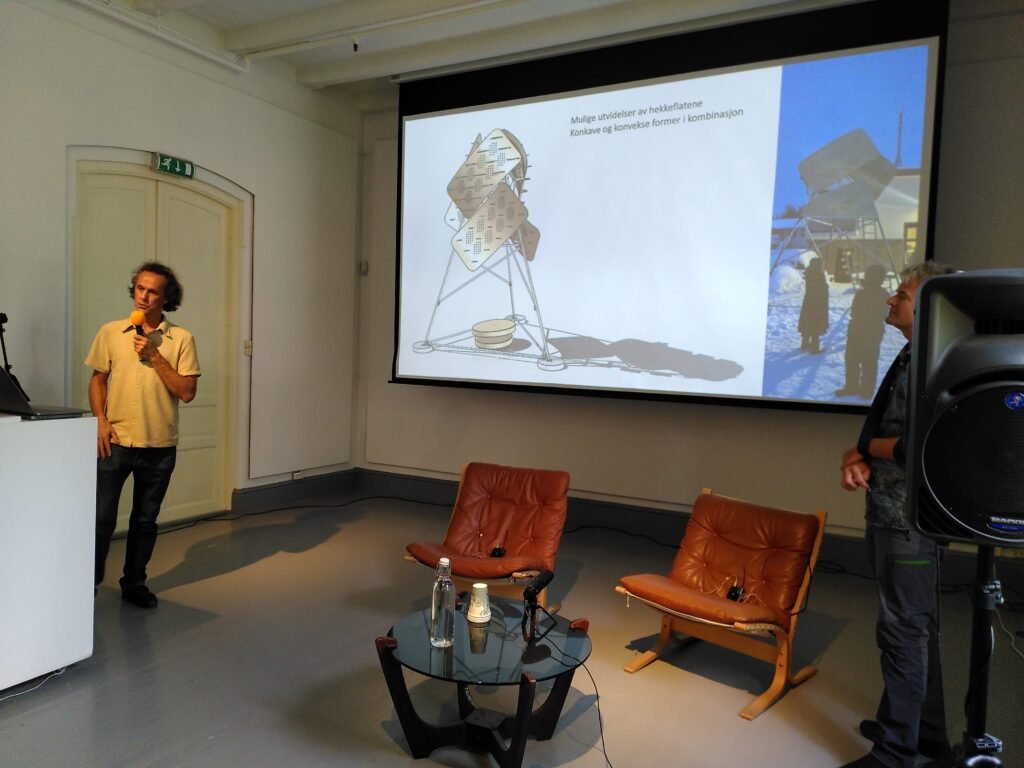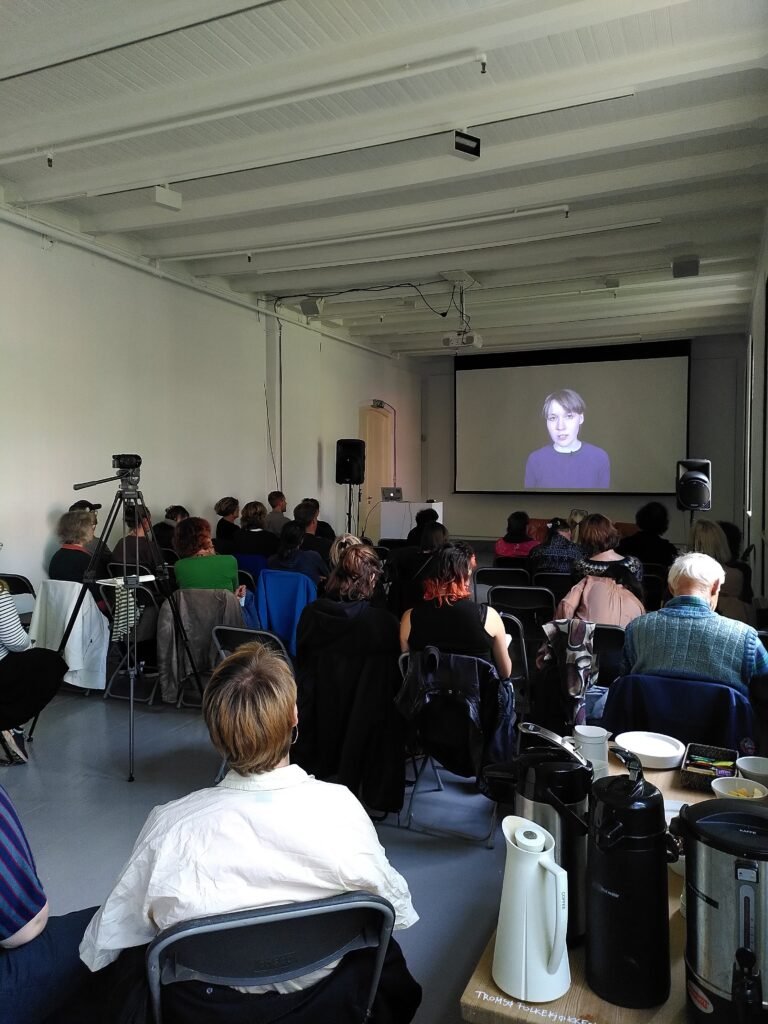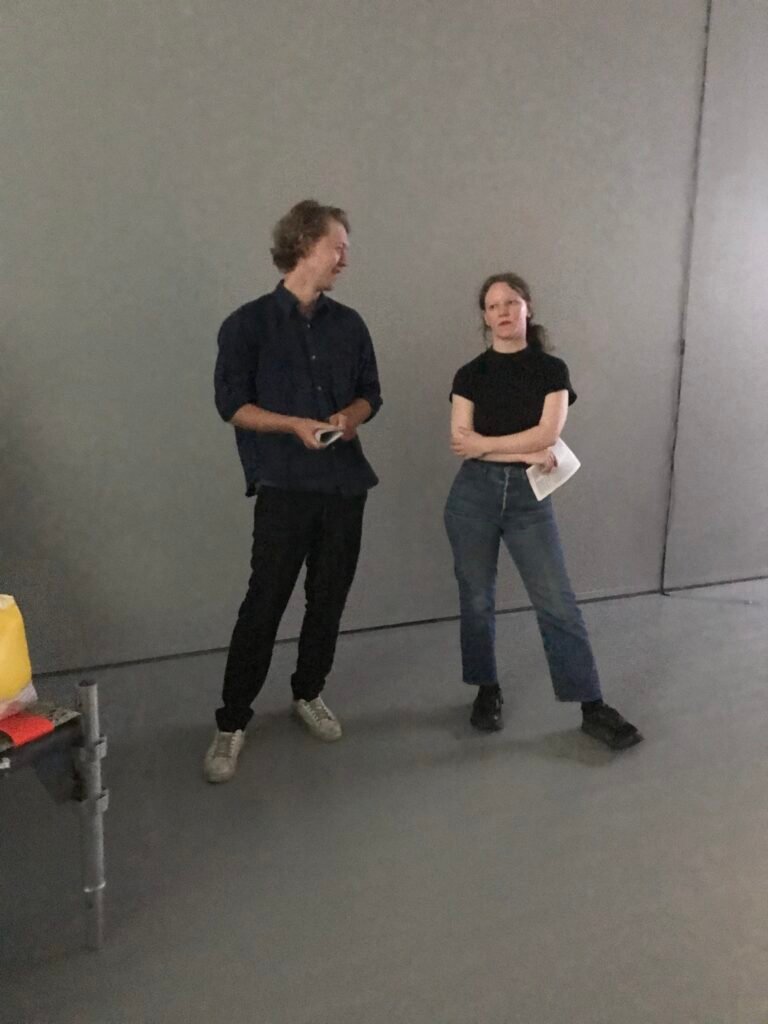Norway Nest: Kittiwakes, the undesirable refugee
This is the second Norwegian Nests in The Conference of the Birds. Here we present how the heated conflict between people and kittiwakes in the city of Tromsø now has taken a new turn due to a unique collaboration between artists, architects, researchers and the city council – Important steps in towards coexistence. This has lead to interesting and fruitful conversations and knowledge exchange, and the creation of artful, designer homes for the previously homeless birds. We organised a seminar in collaboration with Tromsø Art Association where we posed the question: Can People and Birds be friends?
The black-legged kittiwake (Rissa tridactyla) is the most numerous of the gulls in Norway. However, the kittiwake population in Norway has declined by as much as 60-80 percent in the recent decades. Of the seven seagull species in Norway, five are in danger of extinction. For the kittiwakes climate change has led to more difficult access to food in terms of harsh weather on the bird cliffs, the kittiwake’s natural habitat in the ocean. The threats from predators (mainly hungry white-tailed eagles, great black-backed gulls, and corvids) have also caused the kittiwakes to not succeed well in breeding. In Norway and other countries, large numbers of kittiwakes have therefore fled their natural habitats on cliffs in the ocean, to seeking refuge among people in cities. In the city of Tromsø, the population of kittiwakes has increased from 17 pairs in 2017 to 800 in 2024.
Tromsø Municipality’s vision and slogan, “Together for a warm and vibrant Tromsø,” emphasises the integration and inclusion of all the city’s residents. However, the municipality does not extend the same responsibility when endangered birds seek refuge. Instead, it covers buildings with netting to prevent the kittiwakes from nesting on the window sills of urban buildings. Such measures can be seen as an active contribution to their eradication. Human concerns take precedence, while the displaced birds are forced to constantly search for new places to nest. The public debate has been one-sided, with the media largely sympathising with angry residents who want to remove the red-listed kittiwakes from the city. While racism is rarely used in reference to birds and animals, the discussions in the media have been both harsh and one-sided. At the same time, there are many who feel sympathy for the displaced kittiwakes, and attitudes are gradually shifting.
Several artists are now involved in a unique coexistence project in collaboration with the Tromsø Centre for Contemporary Art and the Municipality of Tromsø. The architect Kjeld Nash from AT Architects, artist/designer Lawrence Malstaf and artist Kåre Grundvåg are working together with researcher Tone Reiertsen and others, exploring what kind of urban living conditions might be suitable for the kittiwakes. They have now created several kittiwake hotels; a blend of a refugee camp and a sculpture park for kittiwakes. These have so far been placed in the park outside the Tromsø Centre for Contemporary Art and the Tromsø County Council building. The windowsills of both these buildings were previously home to a huge number of refugee kittiwakes. The project has so far been a success, with a steady number of birds finding new and secure homes on artificial cliffs outside the art gallery.
The Conference of the Birds has followed this transdisciplinary process with great interest, where artists, architects and the municipality has worked together to find creative and good solutions for the urban kittiwake refugees. We were particularly excited about how this process has evolved and how the conflict has shifted during the project. Notably, the media is now more inclined to consider broader perspectives, including the bird’s perspective, which has led to a change in public perception. This is yet another example of how art can move minds and awaken knowledge, joy, empathy, and awareness of our birds in an engaging and thought-provoking way. Rooted in research, such work can expand perspectives and transform conflicts into new, more empathetic spaces of opportunity.
In August 2023, The Conference of the Birds initiated the symposium Can Birds and Humans Be Friends? during the exhibition I Love Seagulls! at the Tromsø Centre for Contemporary Art. Our intention was to provide insight into the interdisciplinary work with the kittiwakes in Tromsø and to present the conflict within a broader bird perspective, conveyed through the artists and researchers involved. We sought to shift the dialogue from conflict-driven and problem-based discussions to more philosophical, aesthetic, and practical considerations. We invited artists, architects, and researchers to present their work with the kittiwakes and engage in dialogue with the public. You can read more about the symposium and see the different talks in the posts below.
Here is the jamsession between David Rothenberg and the kittiwakes, Kitty wee wee. You can see a short video of the concert in the post below.

You can read more about the symposium and see the different talks in the posts below.
Followup: New designer-homes for urban kittiwake refugees.
Kitty Wee Kitty Wee – an interspecies jam concert.
Can people and birds be friends?
How can artists and more-than-human perspectives be included in future social planning?
An endangered bird seeks refuge in the city
It’s all about coexistence
Fuglan Veit – how can research, art, traditional knowledge and dialog be united?
What kind of consideration and dialog do you have to have as an architect and designer when the customer is a bird and the client is a municipality?
How a book saved the whooper swans in Finland from extinction
More-than-human art for endangered birds
PARTICIPANTS IN THE KITTIWAKE NEST AND SEMINAR: Can Birds and Humans be Friends?

Eva Bakkeslett (NO)
Artist/CURATOR
Eva Bakkeslett is an artist, curator and cultural activist. Through her work, she conveys connections between nature and culture as a living organism. Communication across species boundaries, bacterial cultures and fermentation as a process and metaphor is central to her work and disseminated in the form of socially engaged and inclusive projects. Her work provides insight into poetic, sensory and transformative processes where new perspectives are revealed and materialised. Eva is curating The Conference of the Birds with Ulrika Jansson.
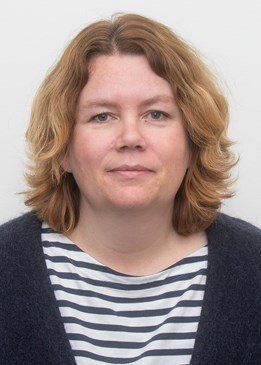
Tone Reiretsen (NO)
PhD RESEARCHER
Tone works as a researcher at the Norwegian Institute for Nature Research (NINA) in Tromsø. Her interests are in the area of the impact of climate and human activities on seabirds demography and population dynamics, and how seabirds are adapting to a changing world. She is monitoring auks, gulls and shags on the Hornøya birdcliff, and urban kittiwake populations in Tromsø and Vardø. At present she specifically works with the impact of storms and fishery on adult survival of puffins and kittiwake. Tone has been invoved as an advisor in the kittiwake collaboration in Tromsø since the beginning.

Irene Kaltenborn (NO)
ARTIST
Irene Kaltenborn grew up in Honningsvåg and works between Tromsø and Malmö. She holds an MA from Malmö Art Academy, working primarily with film and video installations. Within the possibilities and limitations of the film medium, she uses her philosophical and existential starting point to explore themes relating to home, belonging and our complex relationship with nature. Much of her work is an examination of how we interact with our fellow species, deeply inspired by environmental philosophy and ecofeminism. In recent years, she has been deeply engaged in politics and caring for the kittywakes and other seagull species in Northern Norway, which has triggered a number of works and been a breeding ground for future projects.
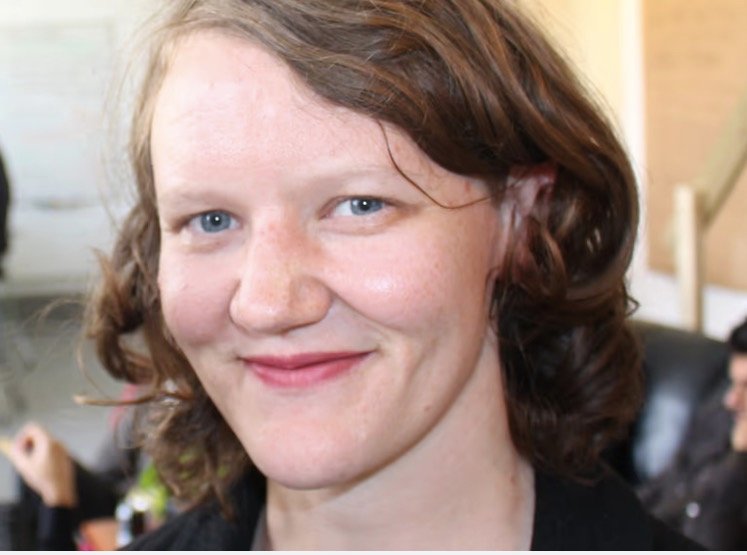
Camilla Fagerli (NO)
ARTIST/CURATOR
Camilla Fagerli is an artist, cultural worker and curator living in Tromsø. Fagerli is artistic and general manager of Tromsø Centre for Contemporary Arts. She is educated at Nordland Art and Film School in Kabelvåg, and the art academies in Tromsø and Copenhagen. Her practice is mostly part of collectives and collaborations, and has in recent years been driven by questions related to how we can redefine societal and institutional structures in a direction that better corresponds to the democratic values we like to claim we have. Camilla and Kåre initiated and curated the exhibition I Love Seagulls and have been involved in the Kittiwake hotell collaboration on the behalf of Tromsø Centre for Contemporary Arts.
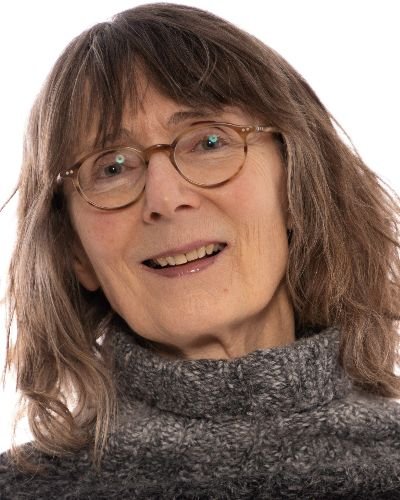
Bente Sundsvold (NO)
associate professor RESEARCHER
Bente a senior lecturer in visual anthropology at the University of Tromsø. In her doctoral thesis ‘The Nordic bird care’, she became well acquainted with the close relationships people along the coast have with seabirds, and vice versa. Bente has done research in a number of externally funded projects related to more-than-human perspectives, empowerment of local knowledge in management, research, and alliance building addressing environmental challenges. Her most recent interdisciplinary project is about seabirds; FUGLAN VEIT (The Birds Know)
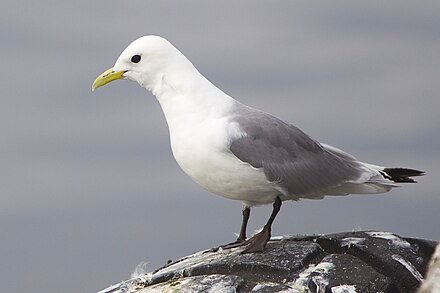
Kittywake (Rissa tridactyla)
seaBIRD
Traditionally we used to be seabirds living in colonies on cliffs in the ocean, eating the fish on the surface of the waters. When finding a mate we are together for life, and we are all for equal rights and both help with the nesting and feeding and bringing up our chicks. Because of climate change and other human caused interference the food source dried up and a lot of us are now refugees, seeking new homes as urban dwellers. We are a declining population, on the red list. Most humans don´t like our songs and chattreings and find us a nuisanse in the city, but some of them are very understanding and are helping us by building new, artificial cliffs for us. We appreciate the effort and try to adapt as city dwellers.
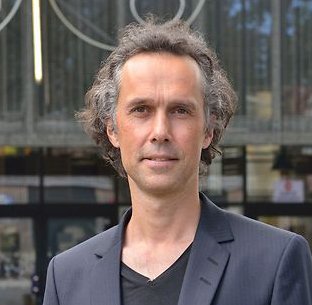
Lewrence Malstaf (BE/NO)
Artist/Designer
Lawrence Malstaf’s practice crosses boundaries between art, design and scenography.
He shows his work both in Norway and internationally and has received several international awards in art and new technology. Lawrence has worked on the design and physical layout of the kittiwake hotels since the beginning of the collaboration. Lawrence holds an MA from Antwerp and lives and works in Tromsø.
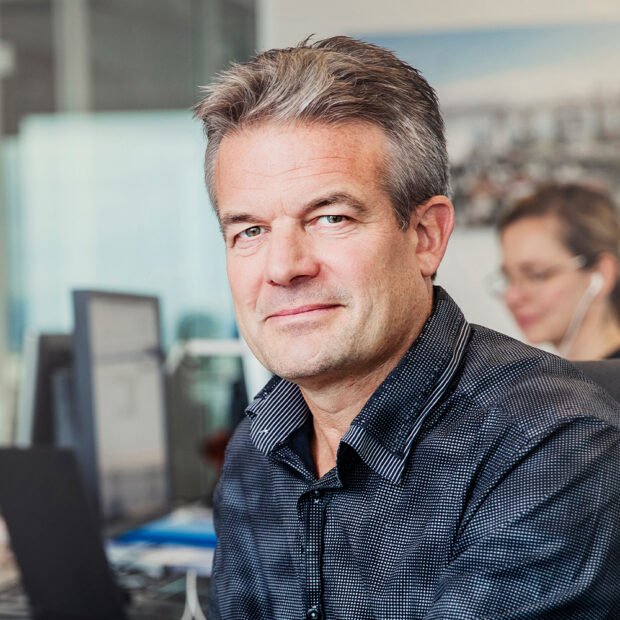
Kjeld Nash (NO)
ARCHITECT
Civil architect with 32 years of experience for both private and public sectors. Kjeld has for the past 12 years been involved in zoning work in addition to projects such as detached houses, cabins, larger residential projects, commercial buildings, cultural buildings, exhibition architecture and installation projects in public spaces. On behalf of Tromsø Municipality, he has collaborated with Lawrence Malstaaf and Kåre Grundvåg on the design of the kittiwake hotels in Tromsø.

Anniken Førde (NO)
Professor
Anniken Førde is a professor of social planning at the University of Tromsø. In her research she focuses on changing places and landscapes, with a particular focus on coastal communities. In recent years, she has been interested in multi-species place development, and is part of the research team at FUGLAN VEIT (The Birds Know).

Kåre Grundvåg (NO)
Artist
Kåre Grundvåg Has his BA and MA from the Academy of Arts in Tromsø and is currently a PhD candidate in artistic research at UMAK, Tromsø and KMD, Bergen.
Through various sculptural techniques and process-based projects, Grundvåg explores a non-human architecture.
Material experimentation, bio-mimetics and traditional knowledge are included as elements in the practice, with the coastal landscape of Northern Norway as a frame of reference. Kåre was born in Tromsø, where he lives and works. Kåre has been part of the kittiwake hotels since the beginning of the collaboration.
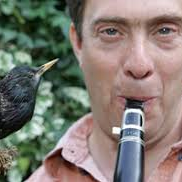
David Rothenberg (US)
philosopher / ARTIST
David Rothenberg is a professor of philosophy and music at the New Jersey Institute of Technology. He makes music live with the sounds of nature, records music with other species, and writes books and makes films about the process. His books and recordings in the field of interspecies music include Why Birds Sing on birds, Thousand Mile Song on whales, and Bug Music on insects. These works have been translated into many foreign languages and have been the subject of documentary films and radio programs in many countries, including Finland, Germany, France, Denmark, the UK and the United States.
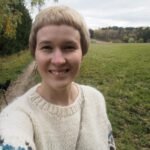
Katri Aholainen (FI)
Doctoral Student, Literary Studies and Creative Writing
Katri Aholainen is currently a doctoral student at Turku University. In her Master’s thesis, she wrote about the involvement of non-human actors in art-making processes. Her material included Yrjö Kokko’s works Laulujoutsen (1950) and They Come Back (1954). Alongside human beings, whooper swans are emerging as important actors in the works, which were completely disappearing from Finland at the time of their publication. Thanks to the size of the swan books, the Finnish attitudes towards the swans changed and the living conditions of the swans began to improve. In her dissertation, she reflected on how whooper swans participated in the process of creating books to save them.

